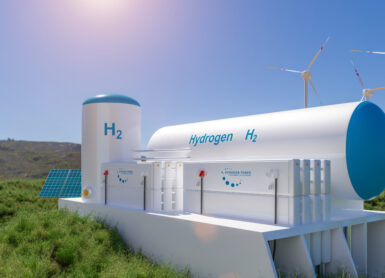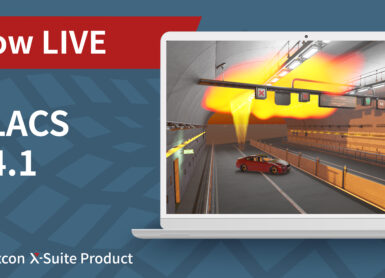

We are pleased to participate in this year’s Mary Kay O’Connor Safety & Risk Conference, which will be held on October 5-7 in the Texas A&M Hotel and Conference Center, College Station, TX, US.
You can meet us at booth 17, where we look forward to hearing about your work and exchanging information and knowledge.
Principal Research Scientist Andreas Mack and Principal Risk Consultant Vinicius Simoes will deliver presentations on topics related to consequence analysis.
Please see our presentation details below.
PRESENTATION 1
Title: Extension of the EFFECTS dispersion model for buoyant plume rise including lift-off
Authors: Andreas Mack, Sonia Ruiz-Pérez, Hans Boot
Presenter: Andreas Mack
Session: Consequence Analysis
Date & Time: Wednesday, 5 October 2022 – 3:30 PM (CDT/ GMT-5)
Abstract (click to expand):
Alternative energy carriers such as hydrogen and ammonia play an important role for the energy transition to reduce global CO2 emissions substantially. These substances will be produced and used in much larger amounts in the near future to replace hydrocarbons compared to today. Therefore, the consequences and risks of bulk storage, handling and transport of these materials must be addressed accurately. Pressurized or liquefied gases released by accident can undergo a transition from heavy gas to rising plume behaviour during dispersion depending on the storage, release and atmospheric conditions and surface effects such as heat transfer. The plume lift-off, plume rise and the entrainment of ambient air play a significant role in the effect distances and the volume of a flammable or toxic cloud.
The EFFECTS code contains different dispersion models for neutral and heavy gas dispersion, which are based on a 1-D discretisation. Since the code was developed in the past with the focus on heavy or neutral gas conditions the simulation of buoyant plumes so far was limited. The aim of the present research was to improve the accuracy of the dispersion model for strongly buoyant plumes and predict the transition from the momentum dominated to the buoyant regime correctly.
The paper describes the theoretical background of the extensions implemented in the dispersion model in EFFECTS. These extensions are aimed at improving the modelling approach for lighter-than-air plumes. In addition, different improvements addressing the source terms and the numerical stability have been implemented. In particularly for low-density gas jet releases like hydrogen, an improved source term model has been implemented, which includes buoyancy effects. The validation of the models incorporating these improvements has been performed and is based on preliminary results compared against experimental data, including instantaneous and continuous releases, elevated jets and low momentum releases from the ground for different materials, including helium, hydrogen and ammonia.
PRESENTATION 2
Title: Are all our pools circular? How to properly address your hazard from a pool fire
Authors: Vinicius Simoes, Drew Botwinick, Scott Davis
Presenter: Vinicius Simoes
Session: Consequence Analysis
Date & Time: Thursday, 6 October 2022 – 4:00 PM (CDT/ GMT-5)
Abstract (click to expand):
A real issue in the industry is to determine the real impact that a possible hazard will impose on your equipment, building and personnel. The pool fire phenomenon is often very relevant for commonly used liquid, flammable materials such as gasoline and hexane. But even for a pool fire event, we can still distinguish between several different appearances.
The idea of this paper will be to provide a proper way to evaluate the impact coming from pool fires, a lot of the models and empirical tools available limit the evaluation to a circular pool. The idea is to show how can the proper hazard can be addressed using squares, rims and even polygons.
Simulating a polygonal-shaped pool is particularly useful to account for the tank pit fire scenario, allowing you to draw the shape of the bund (dike) that contains the spill of flammable liquid.
PRESENTATION 3
Title: When is going beyond an empirical consequence-based facility siting needed?
Authors: Vinicius Simoes, Drew Botwinick, Scott Davis
Presenter: Vinicius Simoes
Session: Energy System & Facility Siting
Date & Time: Thursday, 6 October 2022 – 4:30 PM (CDT/ GMT-5)
Abstract (click to expand):
Most facility siting analyses start with a basic, worst-case empirical consequence analysis. And as it turns out, many of those studies quickly demonstrate that the impact to buildings exceeds the acceptable criteria and requires further analysis. The next level of analyses includes various techniques to rebalance conservatism and realism, including quantitative risk-based studies that produce exceedance curves, etc. However, because the basis of these studies is generally trying to reach the acceptable criteria from the worst-case direction while minimizing the changes to the consequence modelling effort itself—it is not uncommon for these studies to result in design loads that require expensive retrofits to buildings. As a final step, some of these studies will turn to computational fluid dynamics (CFD) to justify avoiding these expensive retrofits. By following this process, the cost of the facility siting study is maximized, and there is a higher chance that expensive building retrofits that don’t actually pass a cost-benefit analysis might be forced to move forward.
This paper will demonstrate some of the benefits of using more realistic CFD modelling earlier in the process to more accurately reflect the real extent of potential building damage. When using the right mix of empirical modelling and CFD up-front as part of a risk-based analysis, facility siting studies can more realistically reflect the potential harm and provide greater cost-benefit—i.e., reduce the true overall cost of the study while also being more realistic about when it may be required to retrofit buildings to meet certain design accidental loads.
About Mary Kay O’Connor Safety & Risk Conference

The Mary Kay O’Connor Safety and Risk Conference serves as the crossroads for process safety where industry, academia, government agencies and other stakeholders come together to discuss critical research issues in process safety.
Experts from around the world will gather as part of this three-day symposium to share the latest information on the hottest topics aimed at making the process industry a safer place.
Please click the button below to learn more about the event.
Other News

Gexcon to present, sponsor and exhibit at the 2024 Spring Meeting and 20th Global Congress on Process Safety.
Gexcon is pleased to announce that we will present, sponsor, and exhibit at the 2024 AIChE Spring Meeting and 20th Global Congress on Process Safety (GCPS). The event will be held on March 24 -28 at New Orleans Ernest N. Morial Convention Center,…
News
Gexcon collaborate with Global R & D to present webinar | Understanding Hydrogen for Safer, Better Design and Operation.
Gexcon is pleased to announce that we will collaborate with Global R & D to deliver a knowledge-sharing webinar. Our esteemed colleague in Singapore, Richard Lee, will deliver this webinar entitled “Understanding Hydrogen for Safer, Better Design and Operation” which aims to…
News
FLACS 24.1 is now live
Gexcon’s latest release, FLACS 24.1, marks a key advancement in the realms of geometry handling and fire safety simulation.
FLACS-CFD News